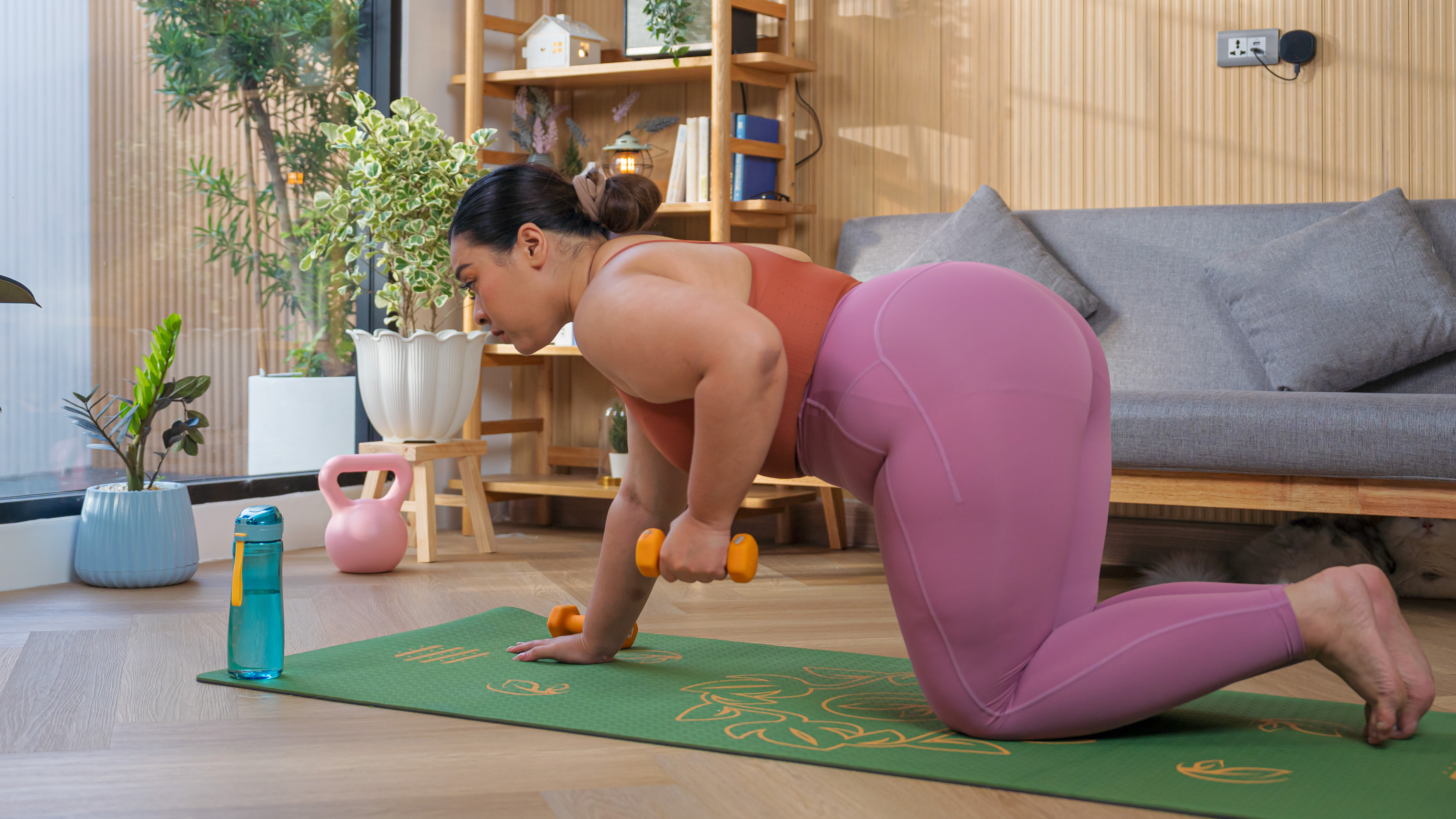"A healthy spine is a resilient one": A Pilates expert shares three moves for building a strong, well-supported spine
Try this pilates instructor's three beginner-friendly moves to support your back


Ruth Gaukrodger
Have you ever been told to stand up straight to correct your bad posture and avoid back pain? Well, that advice isn't always helpful, as explained by Pilates instructor and movement specialist Lena Starzynska in her video below.
“Our spines are not straight,” said Starzynska in her Instagram caption. “They are more like a spring or [the] letter S. It makes it easier for them to handle loads."
To keep our spines healthy, we don't need to stand upright all the time, but it is a good idea to show some love to your postural muscles. These deep core muscles support your spine while it bends, twists and bears heavy loads.
Try doing these three moves from Starzynska, which will help you strengthen these muscles with just a yoga block and a dumbbell.
How to do the three exercises for postural muscles
A post shared by Lena Starzynska | Movement + Pilates | Starlike Online Studio (@starlikemovement)
A photo posted by on
The trainer's moves are all examples of functional exercises, which means they mimic everyday movement patterns. Practicing them regularly will help maintain your spine's ability to flex from side to side and bend.
Try doing each one for 8-12 repetitions, on both sides.
- Supported row
- Extension and side tap
- Gate lean
What is good posture anyway?
We often think that sitting up straight and having an erect posture indicates a person has a strong, healthy spine, but that isn’t strictly true.
Start your week with achievable workout ideas, health tips and wellbeing advice in your inbox.
"A healthy spine is a resilient one. We don’t want to just be able to 'stand straight.' We need to be able to respond to our environment—bend, twist or be tall and proud," explains Starzynska in her caption.
When Fit&Well spoke to physical therapist Dr. Andy Fata-Chan earlier this year, he explained that you can think of posture in two ways: static posture (when standing or sitting) and dynamic posture (when moving). A person's static posture doesn't give any insight into how well they move dynamically, nor does it give any indication of how healthy their spine is.
"There are so many variations to posture...it's impossible to tell if someone is going to be in pain based on their static body," says Dr Fata-Chan.
The best advice for a healthy spine? Move regularly, practice strength training and incorporate stretches into your routine to maintain flexibility.

Lou Mudge is a Health Writer at Future Plc, working across Fit&Well and Coach. She previously worked for Live Science, and regularly writes for Space.com and Pet's Radar. Based in Bath, UK, she has a passion for food, nutrition and health and is eager to demystify diet culture in order to make health and fitness accessible to everybody.
Multiple diagnoses in her early twenties sparked an interest in the gut-brain axis and the impact that diet and exercise can have on both physical and mental health. She was put on the FODMAP elimination diet during this time and learned to adapt recipes to fit these parameters, while retaining core flavors and textures, and now enjoys cooking for gut health.
- Ruth GaukrodgerFitness Editor